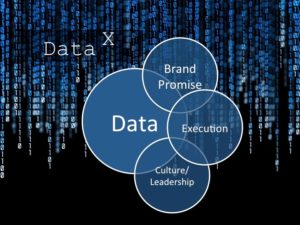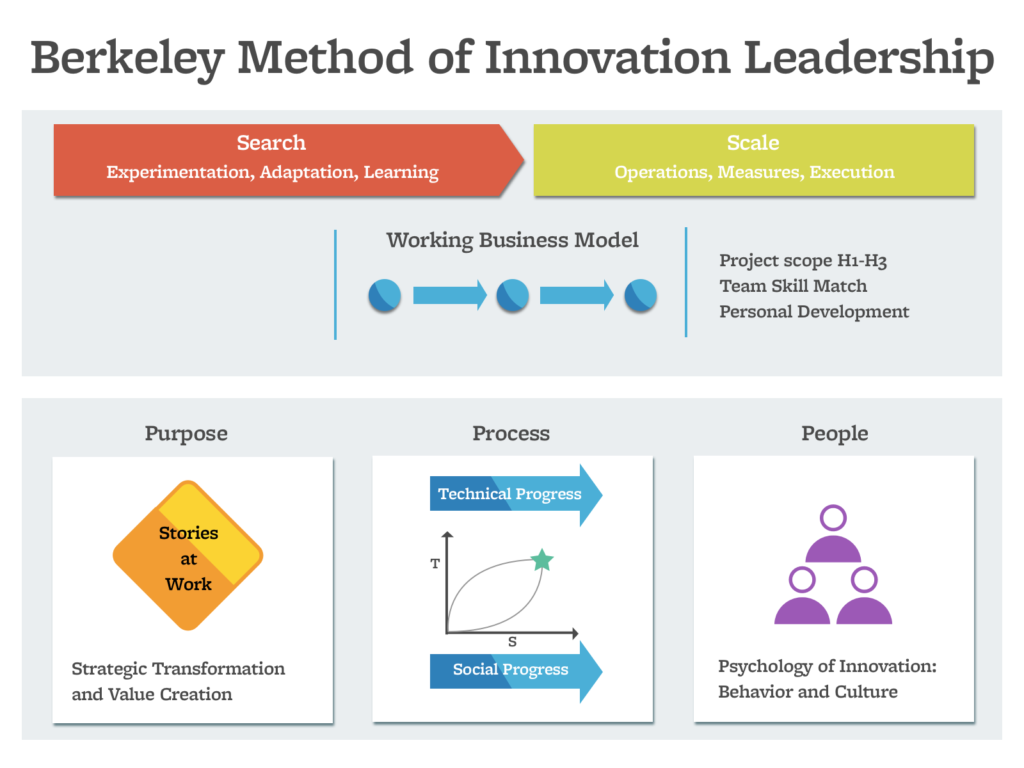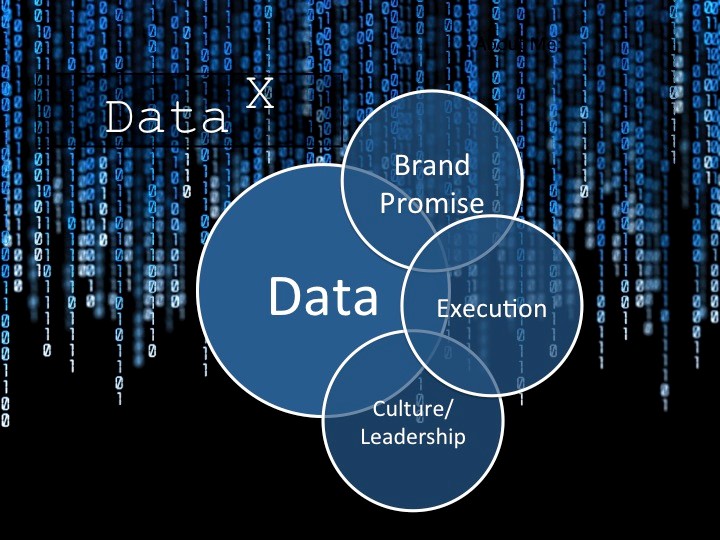Every firm is under pressure to adapt and reinvent, and innovative firms know how to do this. Amazon started by selling retail products over the Internet, but later transformed to offer IT Cloud services as Amazon Web Services. Apple is a similar case — once only a computer company, it reinvented itself into a digital music retailer and much more. And while some firms transform well, others do not, and they end up being disrupted.
Certainly, one of the biggest transformations going on today is the reinvention of every single business with data and algorithms. According to venture capitalist Shomit Ghose, there is a second industrial revolution currently underway. In the first one, the winners were those who leveraged scale and automation to make products inexpensively.
In this next phase of the industrial revolution, the winners are those who can make the most sense of data automatically and at scale. And just as in first case, those who are not able to make the production line equivalent of data flows will simply not be able to complete.
Today, firms like Apple and Google may yet transform into automakers or financial services firms, but the typical automotive or financial services firm cannot get into Apple’s or Google’s businesses.
Here are three questions for you and your executive team:
- Are you getting the results you want from your data projects?
- Is the scope of your data project strategic enough?
- Does your firm have an Innovation Framework so that everyone has a common language about how you grow and adapt as a company?
Unsurprisingly, the answers to these questions are related.
Here is a common situation: In the beginning, your team has great transformative ideas. Technology development may already be underway, and if you have not seen it yet, the project costs are skyrocketing or will be soon. You would think you just need to hire some people who know what “stochastic gradient descent” means and why “entropy” is actually important.
I f the problem were merely technology-related, it would be straightforward to solve. Through our Data-X program (see https://data-x.blog/) at UC Berkeley, we have plenty of experience with data applications. Our projects routinely cover applications — everything from convolutional neural networks for image classification to natural language processing to crypto-locking of data chains. Not to mention, Berkeley itself is the home of Berkeley UNIX, floating point, Winsock, SPARK, and so many of the data tools and methods developed and used today.
f the problem were merely technology-related, it would be straightforward to solve. Through our Data-X program (see https://data-x.blog/) at UC Berkeley, we have plenty of experience with data applications. Our projects routinely cover applications — everything from convolutional neural networks for image classification to natural language processing to crypto-locking of data chains. Not to mention, Berkeley itself is the home of Berkeley UNIX, floating point, Winsock, SPARK, and so many of the data tools and methods developed and used today.
But it’s not just about the Data Science:
The problem is bigger than data science. Business creation and business transformation are still business problems. There are typically a few categories of things that it will slow down – or just kill the transformation that you need. For example, consider these:
- The value creation argument is not really there. It is really just a science project.
- The proposed transformation has no strategic alignment. Even if it works, it is actually distractive to the mission of the firm.
- There is no accepted framework or language in the company that allows this program to be framed, measured, or supported. No one can describe the process to others.
- The project does not have the support from the necessary of stakeholders (internal or external). Sometimes HR/Finance can’t or don’t know how to help.
- The culture of the organization offers too much friction, i.e. a culture of “No.” It is also possible that an innovative team has irritated the rest of the organization so much that the project is already doomed.
- Structurally misaligned incentives. Why innovate if it is only a risk, never measured, and never rewarded.
- People can’t work effectively with each other in non-traditional areas. Or possibly it is just the wrong team.
It’s time for Data and Innovation to meet Leadership:
The approach we use make “great” things happen is to make sure there is an innovation framework that is being communicated and used across the company. Berkeley’s Method of Innovation Leadership is summarized with these points:
-
Project Scope and Team Match:
Every project has a scope from beginning to end. Depending on the risk level of the project, a behavioral skill match is needed. Some projects start early, long before projects have validation of any sort. Others are started later in stages where more requirements are already understood. The right team is comfortable with the appropriate amount of ambiguity.
-
Stories at Work:
The team has to be able to communicate a clear value creation story. The story also has to be strategically aligned. In our experience, the teams that can do this end up with increased budget and those who cannot end up with cancelled projects and slashed budgets. The firm needs to get this right.
-
Know the Innovation Journey:
Everyone in the firm needs to understand the transformation journey so that constructive communication is possible. Design thinking and lean validation are great, but they are not enough by themselves. Customers really don’t buy minimum viable products. Creativity without push-back and follow-up is short-sighted. A common language about the journey defines the process that will be used. The actual process requires both “technical” progress and “social” progress.
-
Psychology of Innovation:
There is psychology to innovation. People who have the correct behaviors and mindsets can transform their organizations. People who don’t typically have enough external awareness, motivation, social skills, or learning orientation to make the project successful. And everyone, including external advisors, must agree to “risk” and therefore need to have “skin” in this game.
-
It can’t be Hands Off:
While it’s good for everyone in a firm to understand an innovation framework, the fact is that this is a multidisciplinary problem. Continued contact with external and internal advisors is needed to navigate the political landmines, the technical hurdles, and the organizational processes.
Is this the only innovation framework? The answer is no — others can also be effective — but in reality, this one just happens to work. By now, over the past 6 years, we have worked with projects at firms all over the world on their technically-oriented transformation projects, e.g. Google, Samsung, VMWare, Cisco, Applied Materials, GM, Ford, Intel, Paypal, Intuit, Kellogg, Tencent, Nissan, Facebook, GE, and so many more in US, China, and Europe. In every case, we see these issues corrected.
Benefits – What we have seen from our work with other firms:
When we work with firms on projects of these types, we have seen the benefits materialize. Without naming specific names, we have seen project teams get the support and attention they need from the executives at many of the firms in our list above. Clear articulation of the model, along with a cultural understanding of an innovation framework is key to screening and supporting projects. We have helped these firms save on projects that will never deliver, and at the same time we have seen hundreds of millions of dollars reallocated to the projects that would make the biggest effects.
If your technology-based transformation or data-related project isn’t quite working, consider introducing it to Innovation Leadership. Because if you don`t have an effective data strategy for reinventing your firm (today, this is increasingly not an option), someone else probably does.
Every firm is under pressure to adapt and reinvent, and innovative firms know how to do this. Amazon started by selling retail products over the Internet, but later transformed to offer IT Cloud services as Amazon Web Services. Apple is a similar case — once only a computer company, it reinvented itself into a digital music retailer and much more. And while some firms transform well, others do not, and they end up being disrupted.
Certainly, one of the biggest transformations going on today is the reinvention of every single business with data and algorithms. According to venture capitalist Shomit Ghose, there is a second industrial revolution currently underway. In the first one, the winners were those who leveraged scale and automation to make products inexpensively.
In this next phase of the industrial revolution, the winners are those who can make the most sense of data automatically and at scale. And just as in first case, those who are not able to make the production line equivalent of data flows will simply not be able to complete.
Today, firms like Apple and Google may yet transform into automakers or financial services firms, but the typical automotive or financial services firm cannot get into Apple’s or Google’s businesses.
Here are three questions for you and your executive team:
- Are you getting the results you want from your data projects?
- Is the scope of your data project strategic enough?
- Does your firm have an Innovation Framework so that everyone has a common language about how you grow and adapt as a company?
Unsurprisingly, the answers to these questions are related.
Here is a common situation: In the beginning, your team has great transformative ideas. Technology development may already be underway, and if you have not seen it yet, the project costs are skyrocketing or will be soon. You would think you just need to hire some people who know what “stochastic gradient descent” means and why “entropy” is actually important.
I f the problem were merely technology-related, it would be straightforward to solve. Through our Data-X program (see https://data-x.blog/) at UC Berkeley, we have plenty of experience with data applications. Our projects routinely cover applications — everything from convolutional neural networks for image classification to natural language processing to crypto-locking of data chains. Not to mention, Berkeley itself is the home of Berkeley UNIX, floating point, Winsock, SPARK, and so many of the data tools and methods developed and used today.
f the problem were merely technology-related, it would be straightforward to solve. Through our Data-X program (see https://data-x.blog/) at UC Berkeley, we have plenty of experience with data applications. Our projects routinely cover applications — everything from convolutional neural networks for image classification to natural language processing to crypto-locking of data chains. Not to mention, Berkeley itself is the home of Berkeley UNIX, floating point, Winsock, SPARK, and so many of the data tools and methods developed and used today.
But it’s not just about the Data Science:
The problem is bigger than data science. Business creation and business transformation are still business problems. There are typically a few categories of things that it will slow down – or just kill the transformation that you need. For example, consider these:
- The value creation argument is not really there. It is really just a science project.
- The proposed transformation has no strategic alignment. Even if it works, it is actually distractive to the mission of the firm.
- There is no accepted framework or language in the company that allows this program to be framed, measured, or supported. No one can describe the process to others.
- The project does not have the support from the necessary of stakeholders (internal or external). Sometimes HR/Finance can’t or don’t know how to help.
- The culture of the organization offers too much friction, i.e. a culture of “No.” It is also possible that an innovative team has irritated the rest of the organization so much that the project is already doomed.
- Structurally misaligned incentives. Why innovate if it is only a risk, never measured, and never rewarded.
- People can’t work effectively with each other in non-traditional areas. Or possibly it is just the wrong team.
It’s time for Data and Innovation to meet Leadership:
The approach we use make “great” things happen is to make sure there is an innovation framework that is being communicated and used across the company. Berkeley’s Method of Innovation Leadership is summarized with these points:
-
Project Scope and Team Match:
Every project has a scope from beginning to end. Depending on the risk level of the project, a behavioral skill match is needed. Some projects start early, long before projects have validation of any sort. Others are started later in stages where more requirements are already understood. The right team is comfortable with the appropriate amount of ambiguity.
-
Stories at Work:
The team has to be able to communicate a clear value creation story. The story also has to be strategically aligned. In our experience, the teams that can do this end up with increased budget and those who cannot end up with cancelled projects and slashed budgets. The firm needs to get this right.
-
Know the Innovation Journey:
Everyone in the firm needs to understand the transformation journey so that constructive communication is possible. Design thinking and lean validation are great, but they are not enough by themselves. Customers really don’t buy minimum viable products. Creativity without push-back and follow-up is short-sighted. A common language about the journey defines the process that will be used. The actual process requires both “technical” progress and “social” progress.
-
Psychology of Innovation:
There is psychology to innovation. People who have the correct behaviors and mindsets can transform their organizations. People who don’t typically have enough external awareness, motivation, social skills, or learning orientation to make the project successful. And everyone, including external advisors, must agree to “risk” and therefore need to have “skin” in this game.
-
It can’t be Hands Off:
While it’s good for everyone in a firm to understand an innovation framework, the fact is that this is a multidisciplinary problem. Continued contact with external and internal advisors is needed to navigate the political landmines, the technical hurdles, and the organizational processes.
Is this the only innovation framework? The answer is no — others can also be effective — but in reality, this one just happens to work. By now, over the past 6 years, we have worked with projects at firms all over the world on their technically-oriented transformation projects, e.g. Google, Samsung, VMWare, Cisco, Applied Materials, GM, Ford, Intel, Paypal, Intuit, Kellogg, Tencent, Nissan, Facebook, GE, and so many more in US, China, and Europe. In every case, we see these issues corrected.
Benefits – What we have seen from our work with other firms:
When we work with firms on projects of these types, we have seen the benefits materialize. Without naming specific names, we have seen project teams get the support and attention they need from the executives at many of the firms in our list above. Clear articulation of the model, along with a cultural understanding of an innovation framework is key to screening and supporting projects. We have helped these firms save on projects that will never deliver, and at the same time we have seen hundreds of millions of dollars reallocated to the projects that would make the biggest effects.
If your technology-based transformation or data-related project isn’t quite working, consider introducing it to Innovation Leadership. Because if you don`t have an effective data strategy for reinventing your firm (today, this is increasingly not an option), someone else probably does.


